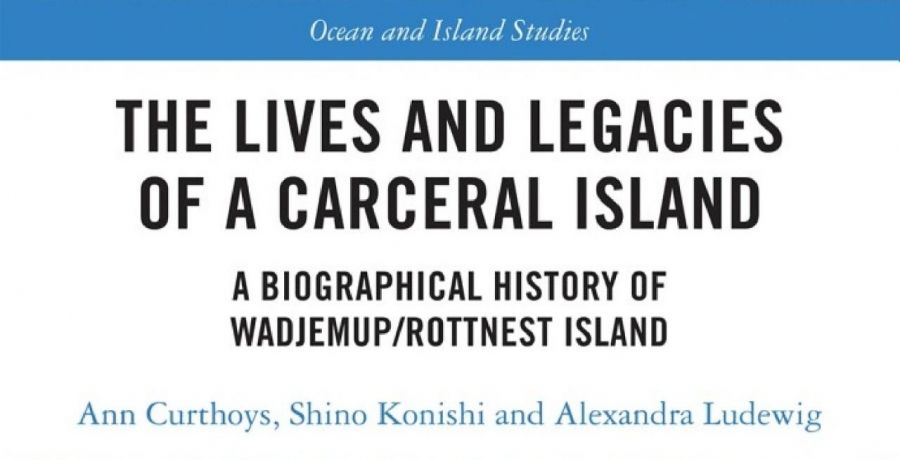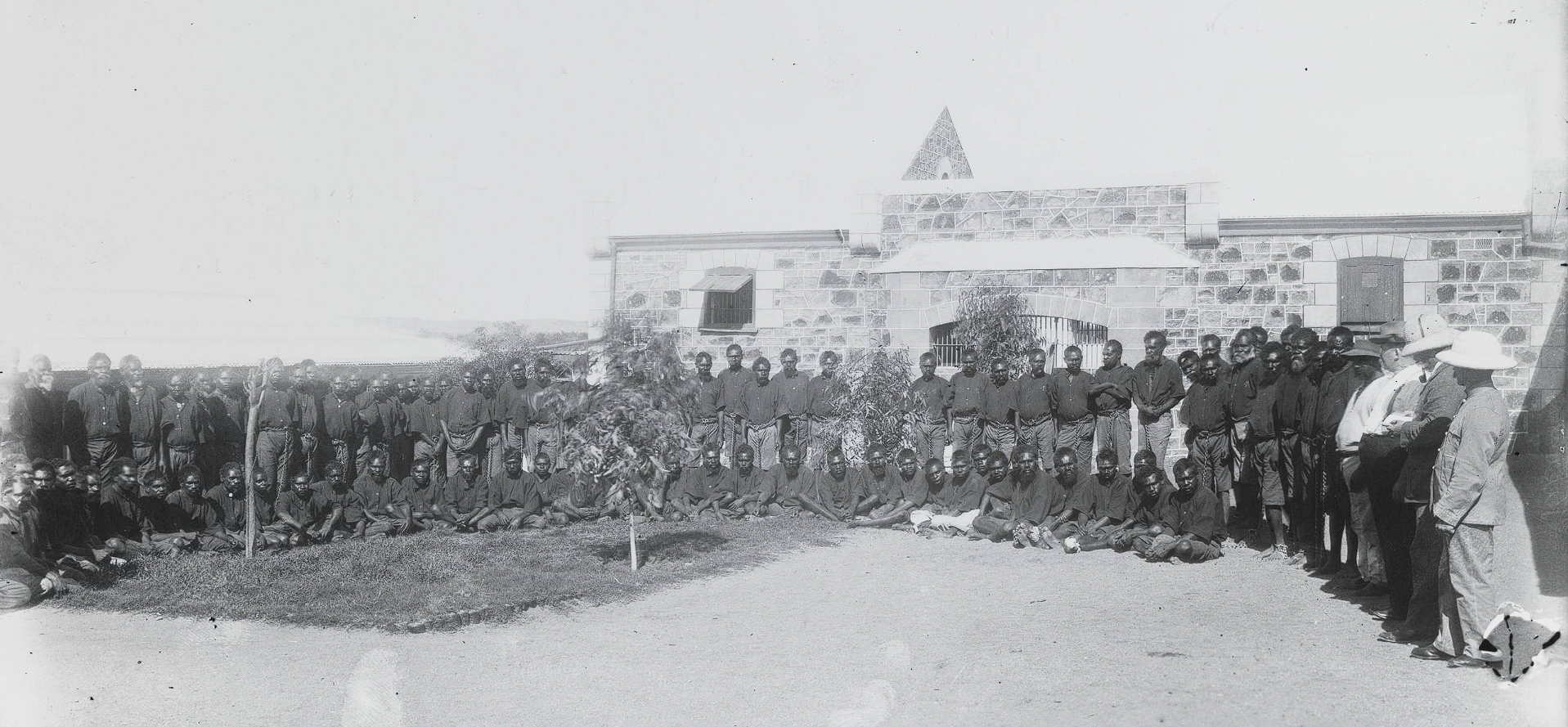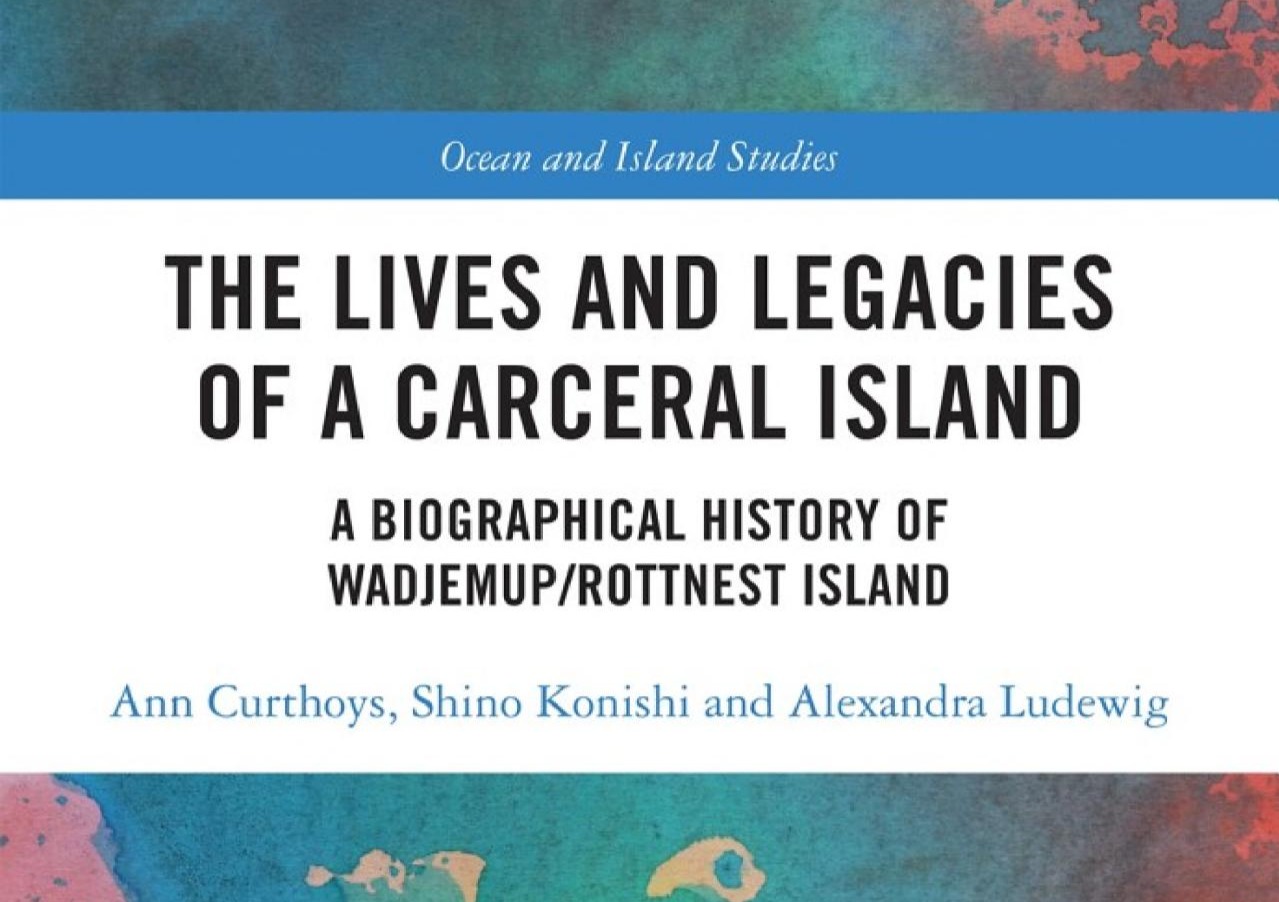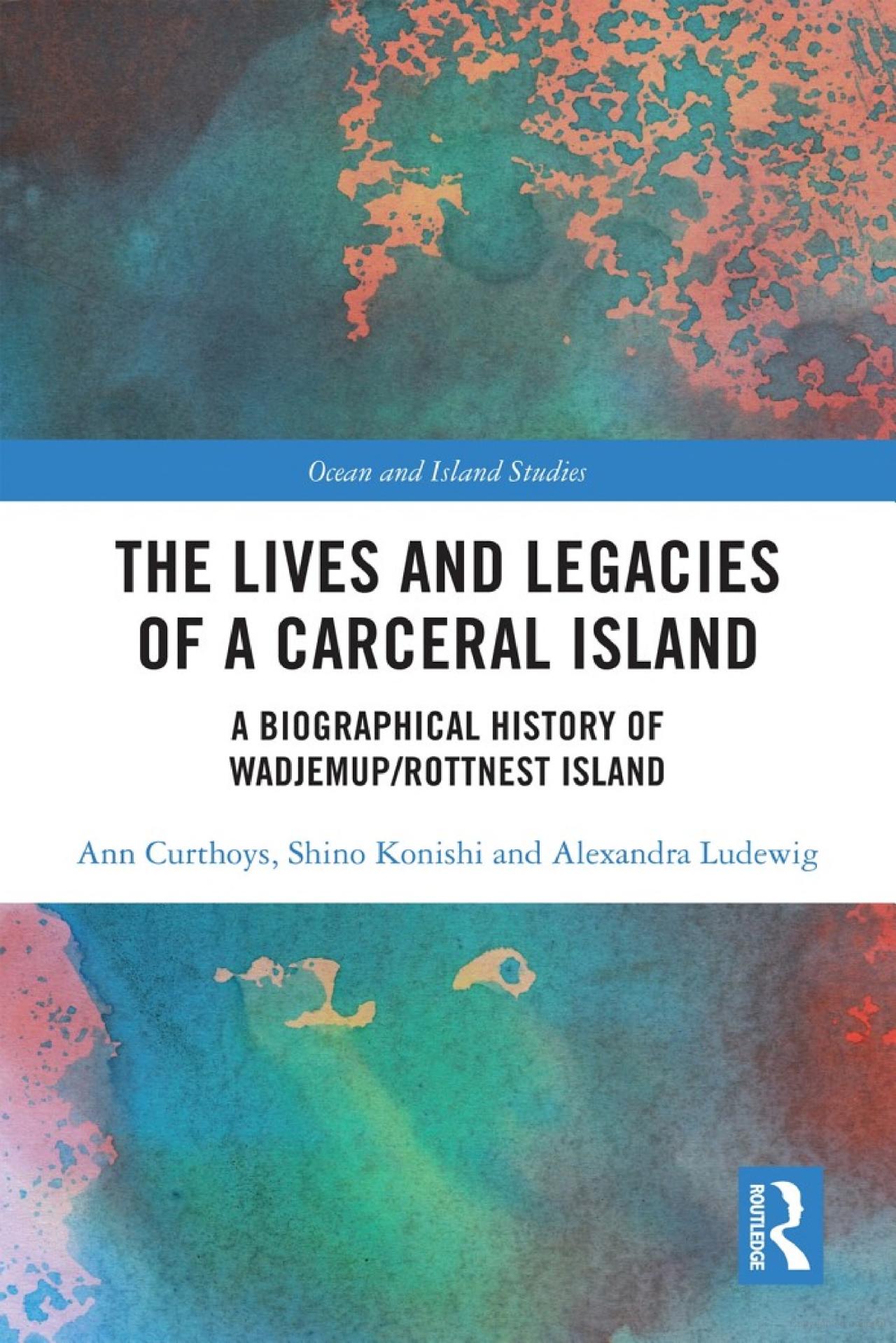
- Free Article: No
- Contents Category: History
- Review Article: Yes
- Article Title: Island laboratories
- Article Subtitle: Exploring postcolonial local history
- Online Only: No
- Custom Highlight Text:
Islands, as recent histories of immigration detention and quarantine show, offer unique things to human societies. Rimmed by a watery bulwark, they have more surveyable borders than do mainlands. Their status as sublands suggest that they exist outside the conventions and temporal dimensions of larger, mainland societies. What happens on an island stays on an island; at least, island prison warders and sojourners imagined this to be the case.
- Article Hero Image (920px wide):

- Article Hero Image Caption: Aboriginal prisoners in the courtyard of Rottnest Island prison, c.1883 (State Library of Western Australia via Wikimedia Commons)
- Featured Image (400px * 250px):

- Alt Tag (Featured Image): Georgina Arnott reviews 'The Lives and Legacies of a Carceral Island: A biographical history of Wadjemup/Rottnest Island' by Ann Curthoys, Shino Konishi, and Alexandra Ludewig
- Book 1 Title: The Lives and Legacies of a Carceral Island
- Book 1 Subtitle: A biographical history of Wadjemup/Rottnest Island
- Book 1 Biblio: Routledge, $218.40 hb, 212 pp
- Book 1 Cover Small (400 x 600):

- Book 1 Cover (800 x 1200):

The authors pursue postcolonial local history, recognising that life stories can illustrate the full force of processes such as dispossession, forced migration, colonialism, and incarceration. Nine chapters centre on sixteen individuals who encountered Wadjemup in vastly different ways between 1696 and 1984. Approximately half came forcibly under a colonial or wartime regime, others arrived in pursuit of wealth and status, or seeking pleasure and inspiration.
Willem de Vlamingh, Dutch explorer, named the island ‘t Eylandt ‘r Rottnest, or Rat’s Nest Island, since its population of quokkas – which he likened to rats – was for him its defining feature. Without pressing the point, chapter one mounts a strong argument for changing the name. The authors explain that de Vlamingh’s ships anchored off its coast for only four days and that his United Dutch East Indian Company mission included instructions to ‘capture Aboriginal people’ in that ‘fabled continent believed to be located eastward of Africa and south of the East Indies’: Terra Australis Incognita. These instructions were designed to motivate de Vlamingh’s crew with the promise of ‘ten pieces of eight to the boatmen for every black they should get hold of on shore’. That they ‘got hold’ of none, nor even came close, was ‘probably fortunate for all’. Judging by earlier clashes between the Dutch and Indigenous people in Cape York, bloodshed would have likely followed.
By contrast, as the Introduction explains, the Whadjuk Noongar have had a connection to the place they call Wadjemup for an estimated 30,000 years, as a ceremonial and hunting site on hard, high rock.
As with Nairm, or Port Phillip Bay in Victoria, oral history carries firsthand accounts of the geological phenomenon disconnecting Wadjemup from the mainland with an ‘inundation’ of water and the ground being ‘split asunder with a great noise’, around 7,000 years ago. This account was written by Swan River (Perth) Advocate General George Fletcher Moore, after his questioning of Whadjuk Noongar in 1842. The authors reflect on the extraordinary length of Indigenous history, a result of oral traditions that place great emphasis on the fidelity of stories; on their being told ‘properly’ by authorised people. (What happens when just anyone has a platform for history-telling, when the notion of graspable and studied truths is discredited, is all around us to see.)
Several chapters explore the history of the island as a prison between 1839 and 1902, for Indigenous and sometimes non-Indigenous people from across Western Australia. A study over two chapters of Prison Superintendent and Prison Matron, Henry and Louisa Vincent, shows that the colonial authorities were aware that a prison island made escape difficult and believed it was a deterrent to crime for Indigenous people, who feared being separated from their communities. They also claimed that it facilitated greater freedom for the incarcerated, who could move about without neck chains (regularly used in Western Australia). Yet the island location made sourcing food and water more difficult, infectious disease more deadly, and any appeal to the colonial regime, against a jailer, more remote. Three hundred and sixty-five Aboriginal men were buried in unmarked graves there.
When Stirling’s successor, Governor John Hutt, became concerned about reports of repeated whippings and lashings of Indigenous men on the island, he appointed Charles Symmons a Protector of Aborigines in 1840. The authors argue that Symmons’s ‘attachment to official and settler interests rather than those of the Noongar people he was meant to protect would have major consequences for the draconian and violent manner in which the prison was run’. That jailer Henry Vincent’s wife Louisa sought to divorce him for being violent towards her is telling context, though little of the decades she endured before this is recorded.
The authors’ reconstruction of biographical ‘fragments’ from seven Indigenous men incarcerated on the island is a high point of the book. Acknowledging the relative dearth of records for these attestants in an 1881–87 Commission of Inquiry ordered by Governor Frederick Broome, they call this audacious history ‘partial biography’. These fragments effectively show how Indigenous labour was used in nineteenth-century Western Australia, both within and outside carceral environments, and the fuzziness of the distinction, so important for this regime, between freedom and unfreedom. Pastoralists and pearlers ‘were completely dependent on Aboriginal labour, which they usually obtained through coercive measures’.
The relative isolation of Wadjemup continued to make it of particular use for authorities into the twentieth century. It was an internment camp for 1,100 civilians from Germany and Austria-Hungary in 1914–15 and a military base during World War II. Fay Sullivan, a single mother, became the island’s first sister-in-charge in 1961, while her island manager husband Des ‘never tired of reminding his guests [that] tourists “don’t come here for sophistication”’.
While the authors wisely eschew any totalising narrative for the set of biographies they have presented, they do note that this small-scale history – the story of Wadjemup – is connected to a broader phenomenon of unfree labour which proliferated within the Indian Ocean from the nineteenth century, in part because of the remoteness of this ocean itself from European population centres. As Curthoys, Konishi, and Ludewig set out compellingly in their opening discussion, the island’s separateness affords it not only physical but also psychological distance from and for those who control it from the mainland.
As this is primarily a work of local history, engagingly written, it seems ironic that it is published by a European publisher and priced for the European and North American library market. But of course the publishing business, like any other, reflects larger relations and geographies of power. No book, no man, no society is an island.


Comments powered by CComment